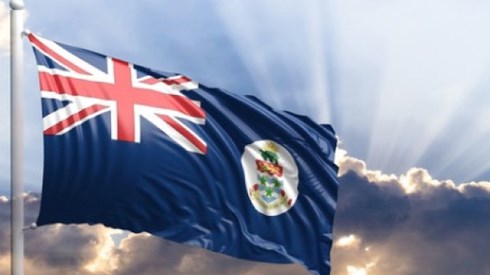3 Important Components of a Captive Claims Handling Operation

Tania Davies , Risk Management Advisors | November 22, 2023

Part of a captive insurance manager's responsibilities involves overseeing claims handling protocols for its clients. Since claims are typically the largest cost of running a captive insurance company, it is important that the captive insurance manager encourage clients to consider this aspect of the captive's operations early in the formation process. So, what exactly goes into creating a suitable captive claims handling operation?
Philosophy
Philosophy drives everything. A captive, an insurance program, and a claims handling operation are all risk management tools that enable the insured organization's owners to decide and follow through on how they would prefer to deal with the risks facing their company.
They will need to first identify those risks, to the best of their ability. Once the exposures are identified, the owners can decide what their preferred approach will be and develop a framework for funding and managing the risks in line with the preferred approach. Part of this philosophy will extend to the strategy the insured wishes to adopt for handling claims.
This should be the starting point of the feasibility study for establishing a captive and/or designing an insurance program. How the company wishes to handle risks will have financial implications in terms of both costs and cash flow. It may even be that the feasibility study highlights unforeseen consequences of the philosophy that result in management adjusting its approach.
Once the philosophy is agreed on as a workable and acceptable approach, all aspects need to be thoroughly documented. Ideally, the strategy should be articulated early on—preferably prior to, or during, the feasibility stage—and should be incorporated as follows.
- It will form part of risk training manuals for the insured.
- It will be clearly communicated to the captive managers and brokers who will be developing the insurance program.
- It will be disseminated to all service providers and all board and committee members.
In this way, everyone will be working toward a common goal with a uniform and integrated approach.
Customization
The second important component of an exceptional claims program is that it is customized to the owner's business and captive insurance company needs, which means that it is tailored according to the agreed philosophy.
This customization will include the type of claims administrator chosen. Preferably, it will include people who understand the business and who will comply with the chosen philosophy.
The client may receive recommendations for an established third-party administrator (TPA) that can offer dedicated staff with years of experience in settling claims in accordance with state regulations and legislative requirements in a prompt, standard approach. However, this is not, in and of itself, enough of a recommendation. If that cookie-cutter approach does not align with the captive owner's (and, presumably, the insured's) claims handling philosophy, this will not be a successful partnership. It may be better to employ a less established TPA, or even independent claims handlers, who are flexible in their approach and open to adopting the position(s) that management wishes to take. Staff with little experience but who have been thoroughly trained to understand and adopt the captive's philosophy may well encourage a more successfully aligned result than more experienced staff who haven't been similarly educated as to the desired outcomes.
To the extent that the captive insurer is not able to write policies directly and a fronting insurer is required, it is desirable to seek out insurers who not only offer the coverage sought (on acceptable terms) but who also operate in a manner that dovetails with the insured organization's philosophy. In these circumstances, it may be that the fronting insurer can offer claims handling services that are also aligned.
When choosing staff for claims handling, there are several approaches available to the insured organization, including hiring additional dedicated employees, using an independent TPA preferred by the reinsurer, or any other alternative or hybrid solution. Whichever course of action is preferred, one critical factor is caseload volume. This is a benchmark used to determine the level of quality that can be provided and is closely linked to the claim staff's ability to provide best-in-class outcomes. It is not sufficient that the staff merely has the culture communicated to it but that it has the capacity to follow it. Its caseload will be an important part of determining its ability to do so.
Customization also includes agreed-upon policy wording, thus ensuring that the identified risks are covered in the approved manner. Someone conversant with the claims handling part of the risk philosophy should review policy documentation before execution to ensure this is the case. To ensure coverage is in line with the insured's needs and philosophy, the insurance policies can be tailored through the use of endorsements, exclusion clause adjustments, and revised wording. It is important that the claims handling staff is trained to understand how management intends for both the policy wording to be adopted and covered claims to be administered.
Data
The third most important component of a successful claim strategy and operation is data production and analysis. This provides insight into pre-loss opportunities while using claims handling best practices to achieve the best possible post-loss outcomes. Data captured in the claims process are rich in valuable information and all too often underutilized. That said, clearly not all data are equal in measuring whether claims operations are on track, in revealing trends, or for use as a predictive tool. The data integrity is important—and it is here that internal audits, including claims audits, play a part.
Operationally, data's usefulness lies in providing management with feedback that will measure the extent to which claims professionals and support staff are working within the parameters of the developed philosophy, workloads, and so forth. Captive owners and captive insurance managers can use metrics such as open, closed, and closing ratios; aged accounts payable reports; reserve movements; and others. Data from loss run reports and loss histories can reveal trends in both loss frequency and loss severity, which in turn can be investigated to determine cause (legislative, environmental, etc.). Most interesting is the recent literature with respect to data models being increasingly used as invaluable predictive tools for planning and ensuring the captive and the insured continue to move in tandem.
The information gathered allows management to recognize quickly if the claims philosophy it wishes to pursue is either no longer workable or is not being adhered to. Either way, it allows processes to be tweaked in real time—assuming a culture is developed within the organization of regularly examining, and drawing conclusions from, data created by the claims handling operations.
Tania Davies , Risk Management Advisors | November 22, 2023





